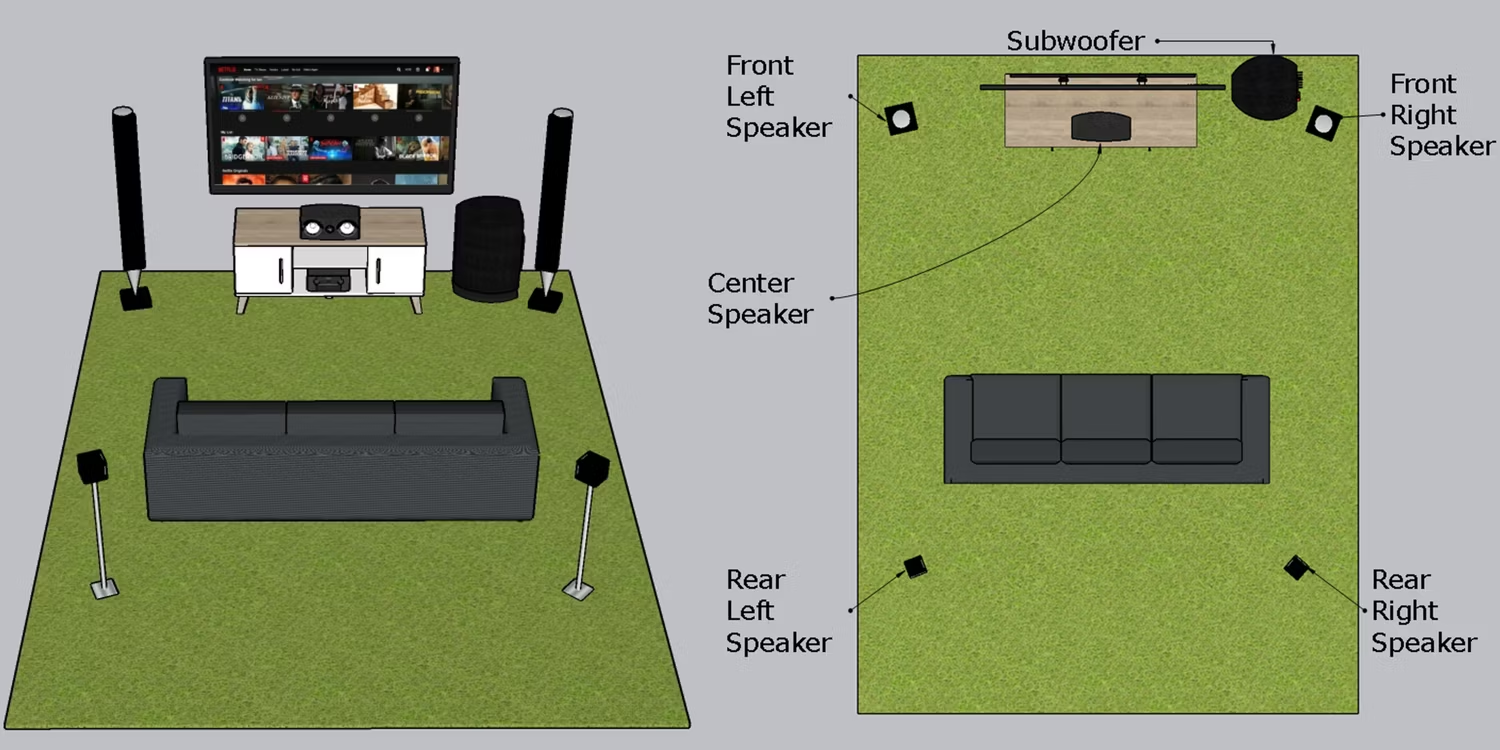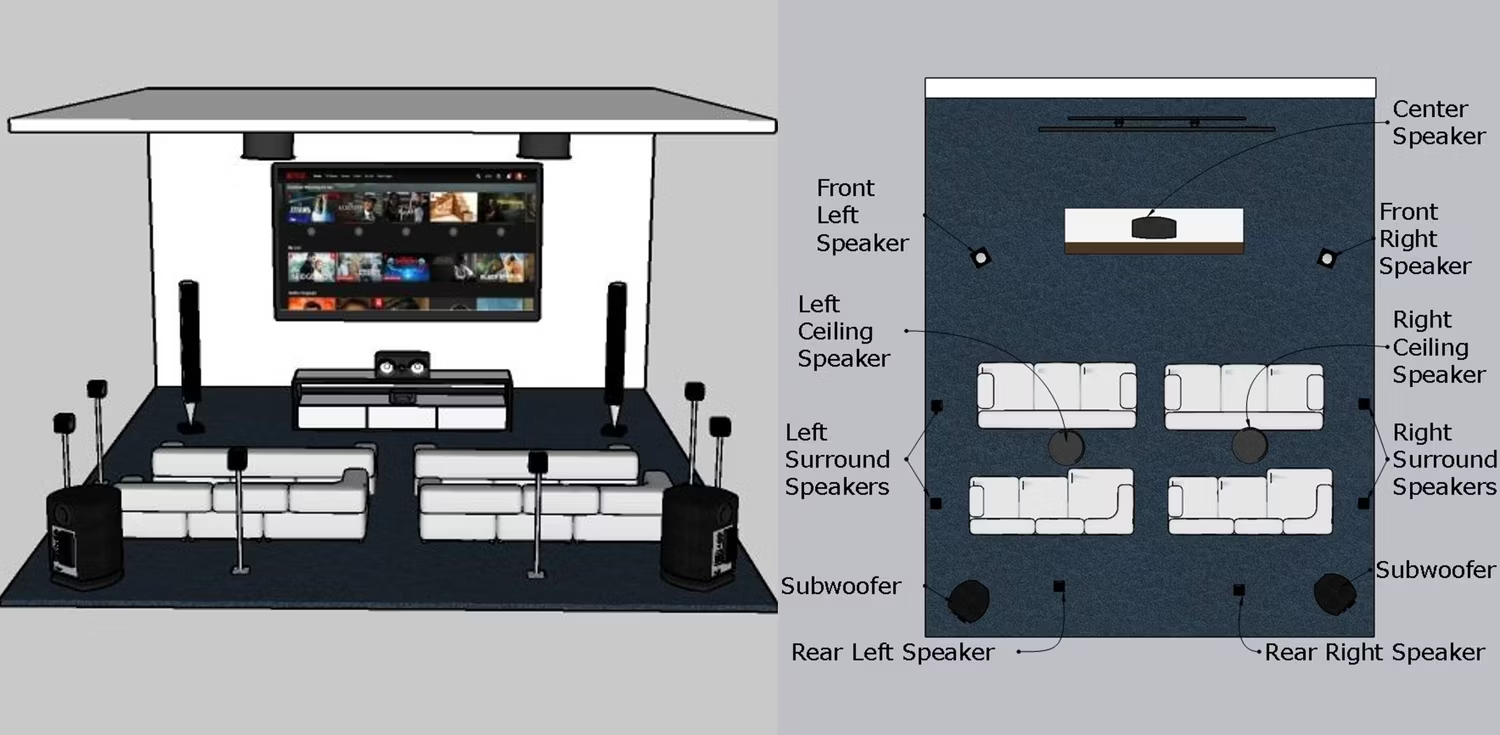Surround Sound Systems
The naming of a surround sound system is as follows:
| Ear Level Speakers | Subwoofers | Overhead |
|---|---|---|
| X | X | X |
For example, 5.1.0, also written as just 5.1
Common examples are 5.1, 7.1, 9.2.2.
5.1
Front Left Satellite, Front Right Satellite, Rear Left Main, Rear Right Main, Center, Subwoofer

7.1
Front Left Satellite, Front Right Satellite, Left Satellite, Right Satellite, Rear Left Main, Rear Right Main, Center, Subwoofer

9.2.2
Front Left Surround, Front Right Surround, 2 Left Surround Speakers, 2 Right Surround Speakers, Rear Left Main, Rear Right Main, Center, Rear Left Subwoofer, Rear Right Subwoofer, Upper Left Subwoofer, Upper Right Subwoofer

Specialized Speakers
For the best experience, different types of speakers are used for different audio frequencies.
1. Central Channel Speaker
They are placed at the front center of a surround sound system. It should cover the full audible spectrum.
To cover such a spectrum, speakers utilize three different drivers - tweeter, midrange and woofer.
If you can only afford a small setup, a center channel speaker with a single full range driver would be enough.
2. Main Left and Right Speakers
They can be a variety of speakers, such as bookshelf speakers or floor-standing speakers. They too cover the full audible spectrum and utilize three different drivers - tweeter, midrange and woofer.
3. Satellite Speakers / Surround Speakers
They are placed at the side and back of the listening / viewing area. They cover the mid to high audio frequencies using the tweeters and mid-range speaker drivers. They are often floor-standing speakers, but they can also be wall-attached.
4. Subwoofers
It covers sounds at the low and very-low frequencies. People within effective range of a subwoofer will feel a rumbling like effect you usually get in theatres. They are the largest speakers in a surround sound system. The bigger the size, the more air it can move and the more noticeable its effects are. They can be placed anywhere in the room as low frequencies are hard to distort.
5. Ceiling Speakers / Overhead Speakers
Ceiling speakers are any speakers placed above the head. They cover the same frequencies as the surround speakers, just at an overhead placement. These speakers are important in achieving object-based surround sound, such as the one utilized in Dolby Atmos.
They also balance audio inside a large room as they can be placed nearby the center of the room if floor-standing speakers are too intrusive.
6. AV Recievers
They are the brain of a surround sound system. They have ports to plug in all your speakers, TV, DVD player, etc. Modern AV receivers support various Surround Sound Formats such as Dolby Atmos and DTS.
Reference
https://www.makeuseof.com/understanding-surround-sound-systems